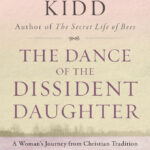The Elden Ring DLC has unleashed a barrage of new challenges for seasoned Tarnished, and among them, the Divine Beast Dancing Lion, often referred to by players as the “lion dancer model,” stands out – and not necessarily for the right reasons. While Elden Ring is renowned for its demanding but rewarding combat, this particular boss encounter has sparked considerable debate within the community, with many questioning the design choices behind it.
Unreadable Visual Clutter and Overwhelming Size
One of the immediate issues players encounter is the sheer size of the Divine Beast Dancing Lion in relation to the arena. The boss’s colossal form, while visually imposing, often becomes a hindrance during the fight. Its proximity to the player, coupled with its rapid movements, results in a chaotic visual experience. Instead of a clear and readable combat scenario, players are often confronted with a confusing jumble of limbs and particle effects, making it difficult to discern attack patterns and react effectively. This visual overload significantly impacts the fight’s readability, a crucial aspect of FromSoftware’s boss design philosophy.
Relentless Attack Patterns and Punishing Speed
Adding to the visual confusion is the boss’s relentless aggression and incredibly fast attacks. The original poster aptly describes the head jabs as being so swift that reaction time feels almost impossible. This speed, combined with the boss’s tendency to chain attacks into lengthy combos, leaves little room for error. A single misstep can quickly lead to a devastating blow, often resulting in a two-hit kill scenario. This level of punishment, especially for what is encountered as an early DLC boss, feels disproportionate to the challenges presented by even late-game bosses in the base Elden Ring experience, such as Radagon.
Healing Hurdles and Phase Transition Mayhem
The fight’s difficulty is further compounded by the limited opportunities for healing. The boss’s design actively punishes attempts to recover health. As soon as a player creates distance to heal, the Divine Beast Dancing Lion frequently leaps into the air, closing the gap and negating any potential health gain. This forces players into a prolonged defensive stance, often lasting upwards of 30 seconds, simply to find a safe window to heal.
The transition to the second phase exacerbates these issues. The introduction of elemental modes – Thunder, Wind, and Ice – adds layers of complexity that many find frustrating rather than engaging.
- Thunder Mode: The threat of being “sniped” across the arena by high-damage lightning strikes while attempting to heal is a common complaint. This mode feels designed to punish cautious play and limit healing opportunities even further.
- Wind Mode: This phase is criticized for seemingly tightening the already precise Elden Ring hitboxes to an unforgiving degree. Even near misses can result in significant damage, making dodging feel less reliable and more frustrating.
- Ice Mode: The ice phase draws comparisons to Dark Souls 2 due to the perceived inadequacy of i-frames in rolls to effectively evade the boss’s area-of-effect (AoE) attacks. This can lead to situations where players feel they are taking damage despite seemingly well-timed dodges.
Limited Attack Windows and Stamina Drain
Even when players manage to navigate the visual chaos and punishing attacks, the windows for counter-attacking are frustratingly small. The Divine Beast Dancing Lion’s rapid attack strings often necessitate constant dodging and stamina management, leaving little stamina available to launch meaningful attacks. This results in drawn-out encounters where players are forced to chip away at the boss’s health in small increments, further amplifying the feeling of unfair difficulty and tediousness.
Difficulty Discrepancy and Summon Reliance
The original poster’s experience of struggling for three hours solo, only to defeat the boss in three attempts with summons, highlights a key point of contention. Many players feel that the Divine Beast Dancing Lion is overtly tuned for co-operative play or summon usage. The stark contrast in difficulty between solo attempts and summon-assisted victories raises questions about the boss’s intended design and balance, especially considering its placement as an early DLC encounter, purportedly harder than even base game endgame bosses like Radagon for some.
In conclusion, while Elden Ring is known for its challenging and intricate boss battles, the Divine Beast Dancing Lion, or “lion dancer model,” presents a unique set of frustrations. Its visual clutter, relentless attacks, limited healing windows, and potentially unbalanced difficulty have led many players to question whether this boss encounter prioritizes challenge over fair and engaging gameplay within the Elden Ring experience.


